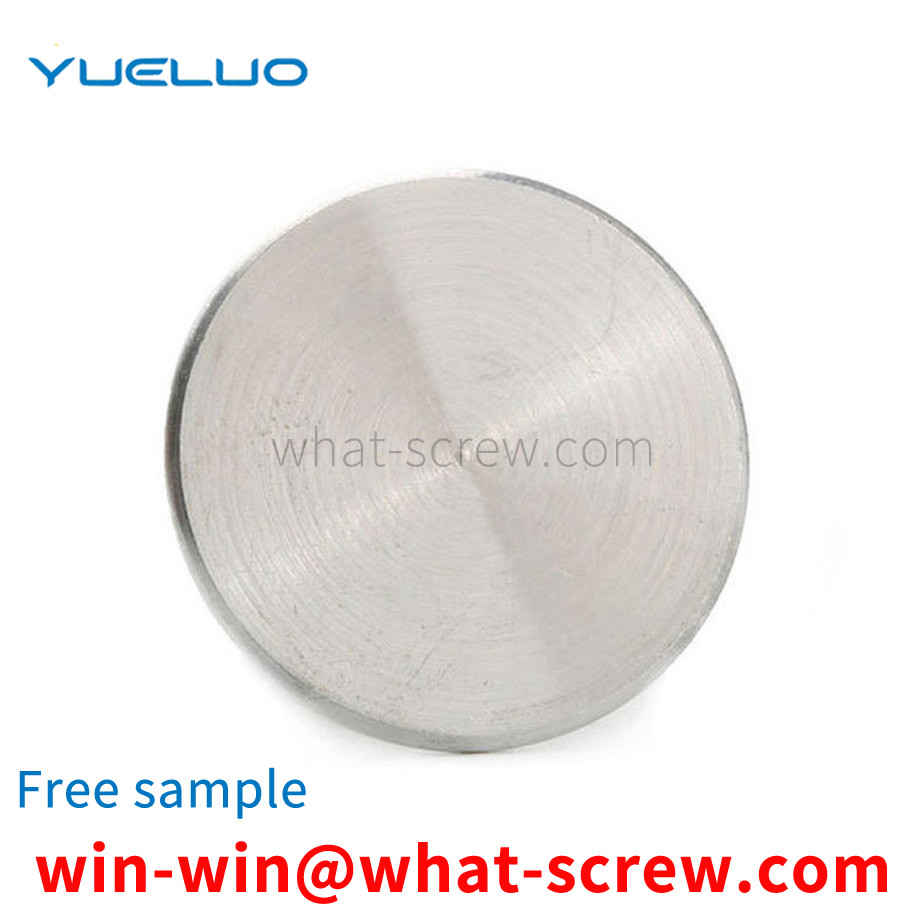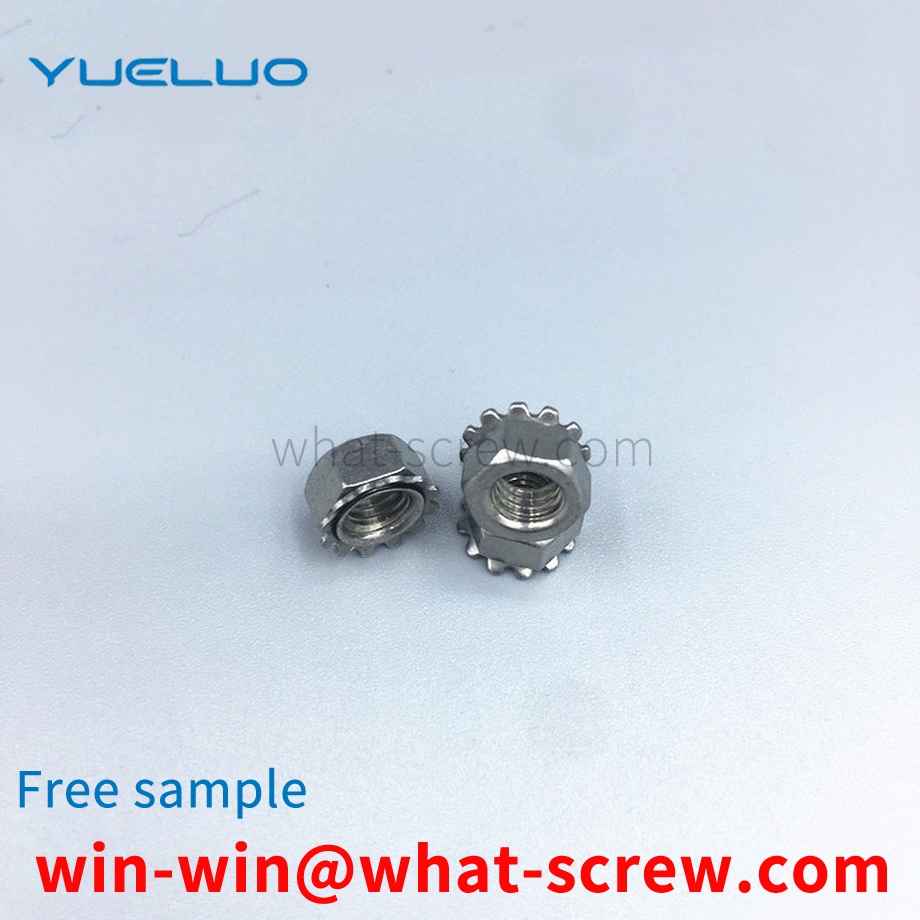Subway tunnels can be divided into rectangular, arched, circular, and elliptical end face forms according to the section shape of the section tunnel. The rectangular end face can be divided into single-span, double-span and multi-span types. There are two types of circles. The subway tunnel needs to install electromechanical equipment through bolts, insert T-shaped bolts into the preset holes on the shield plate of the subway tunnel, and then cast and fix it. The bolts are smooth and the contact surface is small. The bolts installed in the shield plate are easy to fall off, causing the installed equipment to fall and damage or causing losses to pedestrians or vehicles passing in the tunnel. Therefore, it is necessary to further improve the current bolts.
Procurement and sales in the testing process know that the quality of screws is manufactured, not detected, but in manufacturing, we must try our best to make them as good as possible. But it is unlikely to be completely error-free and error-free. We all know that errors are unavoidable and can only be approached infinitely. Therefore, at this time, the quality inspection of the screw is required to improve the quality of the screw. At the beginning of ordering from screw wire material into the production of screw industry manufacturers, you must first check the wire diameter of the screw wire and the material of the screw. Generally, the wire diameter of the screw is measured with a caliper to measure the size of the wire diameter, whether it is suitable for self-ordering. Same size. After testing these, it is the testing in the production process, starting from the head of the screw, to determine the size of the head, the opposite side of the head, the diagonal angle, the depth of the cross groove, the tolerance range of the screw, and so on. These are checked with calipers. In the inspection of all aspects when rolling teeth, the main thing is whether the thread can pass the pass and stop gauge, and whether the screw thread can pass the gauge and stop. Next is the electroplating measurement problem. After electroplating, whether it meets the requirements of environmental protection and whether it can pass the time required by the salt spray. Tools include environmental testing machines and salt spray testing machines. In short, in the process of screw production and sales, there must be necessary tools to detect the quality of screws. The summary should be summarized as follows: calipers, hardness testers, salt spray machines, environmental testing machines, pass and stop gauges, etc. When producing and selling screws, there will be a screw specification and screw model. With the screw specification and screw model, we can understand what specification screw and what size screw the customer needs. Many screw specifications and screw models are based on national standard specifications and models. Generally, such screws are called ordinary screws, which are generally available on the market. There are some non-standard screws, which are not based on the national standard specifications, models and sizes, but are customized according to the standards required by the product materials. There is no stock in the general market at all. In this way, it is necessary to make drawings and samples.
The performance grade 8.8 of stainless steel bolts refers to the material's tensile strength limit of 800MPa and yield limit of 640MPa. The performance grades of stainless steel bolts, studs and studs are divided into 10 grades: from 3.6 to 12.9. The number before the decimal point represents 1/100 of the tensile strength limit of the material, and the number after the decimal point represents 10 times the ratio of the material's yield limit to the tensile strength limit. There are 7 grades of performance grades for nuts, from 4 to 12. The numbers roughly represent 1/100 of the minimum stress that the stainless steel nut is guaranteed to withstand. For unified inch threads, there are three thread grades for external threads: grades 1A, 2A and 3A, and three grades for internal threads: grades 1B, 2B and 3B, all of which are clearance fits. The higher the rating number, the tighter the fit. Classes 1, 1A and 1B, very loose tolerance classes, which are suitable for tolerance fits of internal and external threads. Grades 2, 2A and 2B are the most common thread tolerance grades specified for inch series mechanical stainless steel fasteners. Grades 3, 3A and 3B, screwed together to form the tightest fit, suitable for tight tolerance stainless steel standard parts, for safety critical designs. Metric threads, there are three thread grades for external threads: 4h, 6h and 6g, and three thread grades for internal threads: 5H, 6H, 7H. Thread fit is best combined into H/g, H/h or G/h. For bolts, stainless steel nuts and other refined fastener threads, the standard recommends 6H/6g fit. Carbon steel: The strength grade is marked by ? It consists of two separated numbers. The meaning of the number part before the ? in the marking code represents the nominal tensile strength, for example, 4 in grade 4.8 represents 1/100 of the nominal tensile strength of 400N/MM2. The meaning of the ? and the number part after the point in the marking code represents the yield-strength ratio, that is, the ratio of the nominal yield point or the nominal yield strength to the nominal tensile strength. For example, the yield point of grade 4.8 products is 320N/mm2. The strength grade mark of stainless steel products consists of two parts separated by —. The symbol before — in the sign code indicates the material. Such as: A2, A4 and other signs — indicate strength, such as: A2-70 Carbon steel: The mechanical properties of bolts can be divided into: 3.6, 4.6, 4.8, 5.6, 5.8, 6.8, 8.8, 9.8, 10.9, 12.9 in total 10 performance levels
Thread Code Broadcast Coarse Thread Series UNC Fine Thread Series UNF Extra Fine Thread Series UNEF Fixed Pitch Series UN Marking Method Broadcast Marking Method: Thread Diameter - Number of Threads per Inch Serial Code - Accuracy Grade Example: Coarse Thread Series 3/8—16 UNC— 2A Fine pitch series 3/8—24 UNF—2A Extra fine pitch series 3/8—32 UNEF—2A Fixed pitch series 3/8—20 UN—2A The first digit 3/8 indicates the outer diameter of the thread, in inches , to convert to metric unit mm, multiply by 25.4, that is, 3/8×25.4=9.525mm; the second and third digits 16, 24, 32, 20 are the number of teeth per inch (the number of teeth on the 25.4mm length); The text code UNC, UNF, UNEF, UN after the third digit is the series code, and the last two digits 2A are the precision grade. UNC: Unified Coarse Thread.
Other names of lock nut: root nut, locknut, nut. Purpose: To lock the outer joint of the through wire or other pipe fittings. The working principle of the nut is to use the friction between the nut and the bolt for self-locking. However, the reliability of this self-locking is reduced under dynamic loads. In some important occasions, we will take some anti-loosening measures to ensure the reliability of the nut locking. Among them, the use of lock nuts is one of the anti-loosening measures. There are also three types of lock nuts: The first is to use two identical nuts to screw on the same bolt, and add a tightening torque between the two nuts to make the bolt connection reliable. The second is a special anti-loosening nut, which needs to be used together with a kind of anti-loosening washer. The special lock nut is not a hexagonal nut, but a medium round nut. There are 3, 4, 6 or 8 notches on the circumference of the nut (depending on the size of the nut and the product series of the manufacturer). Several notches are both the focal point of the tightening tool and the snap-in of the lock washer bayonet. The third type is to drill through threaded holes from the outer surface of the nut to the inner thread surface (usually 2, which are distributed at 90 on the outer surface), which are used to screw in small-diameter countersunk head screws. The purpose is to give the thread Apply a centripetal force to prevent the locknut from loosening. The better quality lock nut sold on the market is inlaid with a small copper block that is consistent with the thread of the lock nut on the inner surface of the nut to prevent the radial jacking screw from directly contacting the locked thread and damaging the latter. . This kind of lock nut is gradually applied in the shaft end locking of rotating motion parts, such as the anti-looseness of the bearing at the mounting end of the ball screw. The second anti-loosening method is more reliable than the first, but the structure is relatively complex. Compared with the first two, the third clock has the characteristics of better anti-loosening effect, simpler and more beautiful structure and smaller axial size.
We have many years of experience in the production and sales of screws, nuts, flat washers, etc. The main products are: plastic plastic washers, flat washers specifications, pin bolts, 1.5D thick hexagonal nuts and other products, we can provide you with suitable fasteners solution.



















 Service Hotline
Service Hotline




